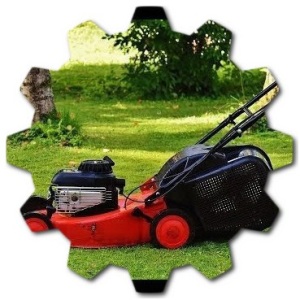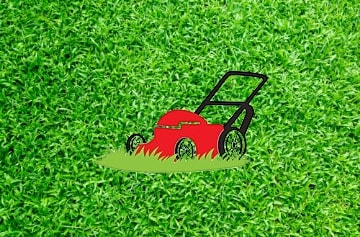How much does it cost to get your lawn treated in Ohio?
The cost of getting your lawn treated in Ohio can vary widely depending on several factors, including the size of your lawn, the type of treatments you need, and the specific service provider you choose. Common lawn treatments in Ohio may include fertilization, weed control, pest control, aeration, overseeding, and more.
To get an accurate estimate for your specific lawn, it’s best to contact local lawn care companies in Ohio and request quotes. They can assess your lawn’s needs, provide you with a customized plan, and give you a more precise cost estimate based on your requirements. Additionally, prices can change over time, so it’s a good idea to get multiple quotes to compare costs and services. Here are some approximate cost ranges for different lawn treatments in Ohio:

- Fertilization: Basic fertilization services can cost anywhere from $40 to $100 or more per application, depending on the size of your lawn and the type of fertilizer used. You may need multiple applications throughout the year.
- Weed Control: Weed control treatments typically range from $40 to $80 per application. The cost may vary depending on the severity of the weed problem and the type of herbicides used.
- Pest Control: The cost of pest control services can vary widely depending on the type of pests you’re dealing with. For example, treating for grubs or insects might cost around $50 to $100 per application.
- Aeration: Lawn aeration can cost between $75 to $200 or more, depending on the size of your lawn and whether you opt for core aeration or liquid aeration.
- Overseeding: Overseeding costs can range from $75 to $150 or more, depending on the size of your lawn and whether you choose to do it yourself or hire a professional.
- Lawn Care Packages: Many lawn care companies offer comprehensive packages that include multiple treatments. These packages can range from a few hundred dollars to over a thousand dollars annually, depending on the services included and the size of your lawn.
How do I get my lawn green in Ohio?
Getting a green lawn in Ohio, like in many other regions, requires proper lawn care and maintenance. Here are some steps to help you achieve a lush green lawn:

- Soil Testing: Start by conducting a soil test to determine the pH and nutrient levels in your soil. This will help you understand what your lawn needs and what amendments may be necessary. Contact your local county extension office or use a DIY soil test kit.
- Fertilization: Based on your soil test results, choose a suitable fertilizer. Generally, lawns in Ohio benefit from a balanced fertilizer with a ratio like 4-1-2 or 3-1-2 (N-P-K), applied in spring and fall. Follow the recommended application rates.
- Mowing: Keep your grass at the appropriate height. For most cool-season grasses in Ohio (like Kentucky bluegrass, fine fescue, or perennial ryegrass), a height of 2.5 to 3.5 inches is ideal. Never remove more than one-third of the grass height in a single mowing.
- Watering: Proper watering is crucial. Lawns usually need about 1 to 1.5 inches of water per week, including rainfall. Water deeply and infrequently rather than shallow and often. Early morning is the best time to water.
- Aeration: Lawn aeration, typically done in the fall, helps improve soil compaction and allows air, water, and nutrients to penetrate the soil more effectively.
- Overseeding: If your lawn has thin or bare spots, overseed in the early fall. Choose grass seed that matches the existing grass type for best results.
- Weed Control: Regularly inspect your lawn for weeds and address them promptly. You can use herbicides, but be cautious to follow instructions carefully.
- Pest Control: Keep an eye out for common lawn pests like grubs, chinch bugs, and armyworms. Address infestations as needed.
- Dethatching: If your lawn has a thatch problem (a layer of dead grass and debris between the soil and the grass), consider dethatching in early spring or fall.
- Maintenance Schedule: Develop a lawn care schedule that includes mowing, fertilizing, watering, and other tasks based on the specific needs of your grass type and local climate.
- Fall Cleanup: In the fall, clean up leaves, sticks, and debris from your lawn to prevent suffocation and disease.
- Winterization: In late fall, apply a winterizing fertilizer to help your grass prepare for the winter months.
- Patience: Achieving a green lawn may take time and consistent effort. Be patient and persistent in your lawn care practices.
Remember that the specific care requirements for your lawn may vary depending on the type of grass you have and the local climate conditions. It’s also a good idea to consult with your local agricultural extension office or a lawn care professional for advice tailored to your specific location in Ohio.
When should I start mowing my lawn in Ohio?
The best time to start mowing your lawn in Ohio typically depends on the grass type you have in your lawn and the local weather conditions. Ohio has a range of climate zones, but generally, cool-season grasses like Kentucky bluegrass, fescue, and perennial ryegrass are common in the state. Here are some general guidelines for when to start mowing your lawn in Ohio:
Spring: In Ohio, the spring season is when grass begins to grow again after the winter dormancy. As soon as the grass starts to grow and reaches a height of about 2.5 to 3 inches, you can start mowing. This typically occurs in late March to early April in most parts of the state, depending on the weather.
Mowing Height: For cool-season grasses in Ohio, it’s generally recommended to maintain a mowing height of about 2.5 to 3.5 inches. However, the ideal height can vary depending on your specific grass type and local conditions. Make sure not to cut more than one-third of the grass blade’s length at a time to avoid stressing the lawn.
Frequency: During the active growing season in spring, you may need to mow your lawn every 7 to 10 days, or more frequently if it’s growing rapidly. As the weather warms up, grass growth accelerates.
Sharp Blades: It’s essential to keep your mower blades sharp for a clean cut, as dull blades can damage the grass and make it more susceptible to disease.
Mulch Grass Clippings: Consider mulching grass clippings back into the lawn rather than bagging them. Mulching can help return nutrients to the soil and promote a healthier lawn.
Adjust for Weather Conditions: Be mindful of weather conditions and adjust your mowing schedule accordingly. If there’s a drought, you may need to mow less frequently and raise the mowing height to help conserve moisture. Conversely, in wet conditions, you may need to mow more often to prevent the grass from becoming too tall.
Remember that these are general guidelines, and the specific timing for mowing your lawn in Ohio can vary based on local weather patterns and the condition of your lawn. It’s a good practice to observe your grass and start mowing when it reaches the recommended height for your grass type. Additionally, follow a regular lawn care routine, including fertilization and watering, to keep your lawn healthy throughout the growing season. Ohio grass cutting >>
How often should you fertilize your lawn in Ohio?
Fertilizing your lawn in Ohio, like in many other regions, depends on various factors including the type of grass you have, the specific soil conditions, and the climate. What is the best fertilizer for Ohio grass?
Is it better to fertilize before or after rain? When should I fertilize my lawn in Central Ohio? However, here are some general guidelines for fertilizing your lawn in Ohio:
- Cool-Season Grasses: Ohio primarily has cool-season grasses such as Kentucky bluegrass, fine fescue, and perennial ryegrass. These grasses have two main periods of active growth: spring and fall. Therefore, the best times to fertilize are in the early spring (April to May) and late summer to early fall (August to September).
- Soil Testing: Before applying any fertilizer, it’s a good idea to conduct a soil test. Soil tests can help determine the specific nutrient needs of your lawn and provide recommendations on the type and amount of fertilizer to use.
- Fertilizer Types: Choose a fertilizer with a balanced N-P-K ratio (Nitrogen, Phosphorus, and Potassium) suitable for your grass type. In general, for cool-season grasses, a fertilizer with a ratio like 3-1-2 or 4-1-2 can work well. However, the specific formulation may vary depending on your soil test results.
- Frequency: Typically, cool-season lawns in Ohio benefit from two to four applications of fertilizer per year. Here’s a common schedule:
- Early Spring: Apply fertilizer in April to early May when the grass is starting to actively grow.
- Late Summer/Fall: Apply another round of fertilizer in late August to early September as the lawn prepares for winter.
- Optional Late Fall/Winterization: Some homeowners in Ohio also apply a winterization fertilizer in late fall (November) to promote root growth and prepare the lawn for the winter months. This step is optional but can help improve lawn health.
- Avoid Excessive Nitrogen: Be cautious not to over-fertilize, especially with nitrogen. Excessive nitrogen can lead to excessive top growth, making your lawn more susceptible to diseases and requiring more frequent mowing.
- Follow Label Instructions: Always follow the manufacturer’s instructions on the fertilizer bag for application rates and safety precautions.
- Consider Organic Options: If you prefer an organic approach, there are organic fertilizers available that can provide nutrients to your lawn without synthetic chemicals.
- Watering: After applying fertilizer, make sure to water your lawn thoroughly. This helps the nutrients reach the root zone and reduces the risk of burning the grass.
Remember that these are general guidelines, and your lawn’s specific needs may vary based on factors like soil composition and weather conditions. Conducting a soil test and consulting with a local horticulture extension office or lawn care professional can provide more precise recommendations for your lawn in Ohio. Ohio lawn care services >>





